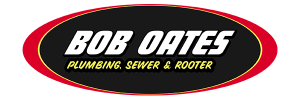5 Plumbing Problems Every Home Buyer Should Look For
CALL (206) 789-4944
Serving the Greater Seattle Area

When purchasing a new home, there are many factors home buyers must consider. After all, you want to not only make a sound real estate investment, but also ensure the property isn’t a money pit. Everything from structural damage to electrical issues should be thoroughly examined. At Bob Oates Sewer & Rooter, we’re here to tell you the same goes for potential plumbing problems.
In order to help home buyers make an informed decision, we’ve compiled the following list to assist in pinpointing common problems associated with home plumbing. These issues cover both newer construction as well as older homes. As always, if there seems to be a plumbing issue to be addressed, it’s always wise to contact a professional plumber or home inspector.
1. Septic or Sewer
One of the first things a home buyer should look for when purchasing a new home is whether the house is on city sewage or septic. If it’s on city sewage, there’s a good chance that any plumbing issues will be minimal. City or municipal sewage is reliable and can take on an almost unlimited amount of waste.
On the other hand, if it’s a septic tank that the house has, there are some signs to look for. First, find out where the septic tank is located on the property. In most cases, it’s in the backyard. Second, inspect the ground around the septic tank. If there are any soft spots in the ground or a strong sewer smell, the tank may have a leak. Third, simply ask the previous or current owner the last time the tank was cleaned and inspected. Don’t be shy about requesting receipts, as septic tank replacement is costly.
2. Lead Pipes
Not only are lead pipes a hassle to replace, they’re also an environmental hazard due to (you guessed it) their lead content. If the house was built before the year 2000, there’s a chance lead or galvanized plumbing was used. These types of metals can and will corrode, causing potential major health and plumbing issues.
One indicator the house may have lead pipes is if there’s rust in the water. Also, metallic tasting water could mean there are lead pipes as well. Considering a one-story, 2,500 square foot house will cost thousands of dollars to re-plumb, this is something that needs to be figured out. Always ask the current homeowner and/or call an inspector to be certain.
3. Water Heater
The water heater should also be taken into consideration before purchasing that new home. A quick way to find out if the water heater is functioning is to simply run the hot water from a faucet. If it doesn’t heat, or takes a while to reach the desired temperature, the water heater may need to be replaced. Also, keep in mind that a family of four requires at least a 50-gallon water heater tank to provide consistently hot water.
4. Water Pressure
Weak water pressure could indicate plumbing problems too. A good test for low water pressure is to run the bathroom sink and flush the toilet at the same time. If the water pressure drops drastically, this could be an indicator of improper plumbing, corroding pipes, or a blockage. This is also a good time to see if all that water is properly draining. Slow draining or non-draining pipes could be any number of serious issues.
5. Water Stains
A great visual indicator of plumbing issues in a new home is the presence of water stains on the walls and ceiling. Water stains on the ceiling are only likely in multiple story homes. If there are brown stains or warped drywall on any bathroom or kitchen walls, this is a pretty good indicator that there might be leaking pipes or corroded pipes.
Wrapping Up
Home buyers need to be aware of everything when it comes to the issues that go along with a new home. Hopefully, the tips we’ve provided above will help you address any plumbing issues head-on. Bottom line: Before agreeing on that closing cost, make sure the house is sound and the plumbing is too!
The team at Bob Oates is here for you — give us a call or reach out to us online anytime if we can be of further assistance.
We have an expansive service area across the region, including proudly serving the following cities and communities:
CALL (206) 789-4944
Serving the Greater Seattle Area





